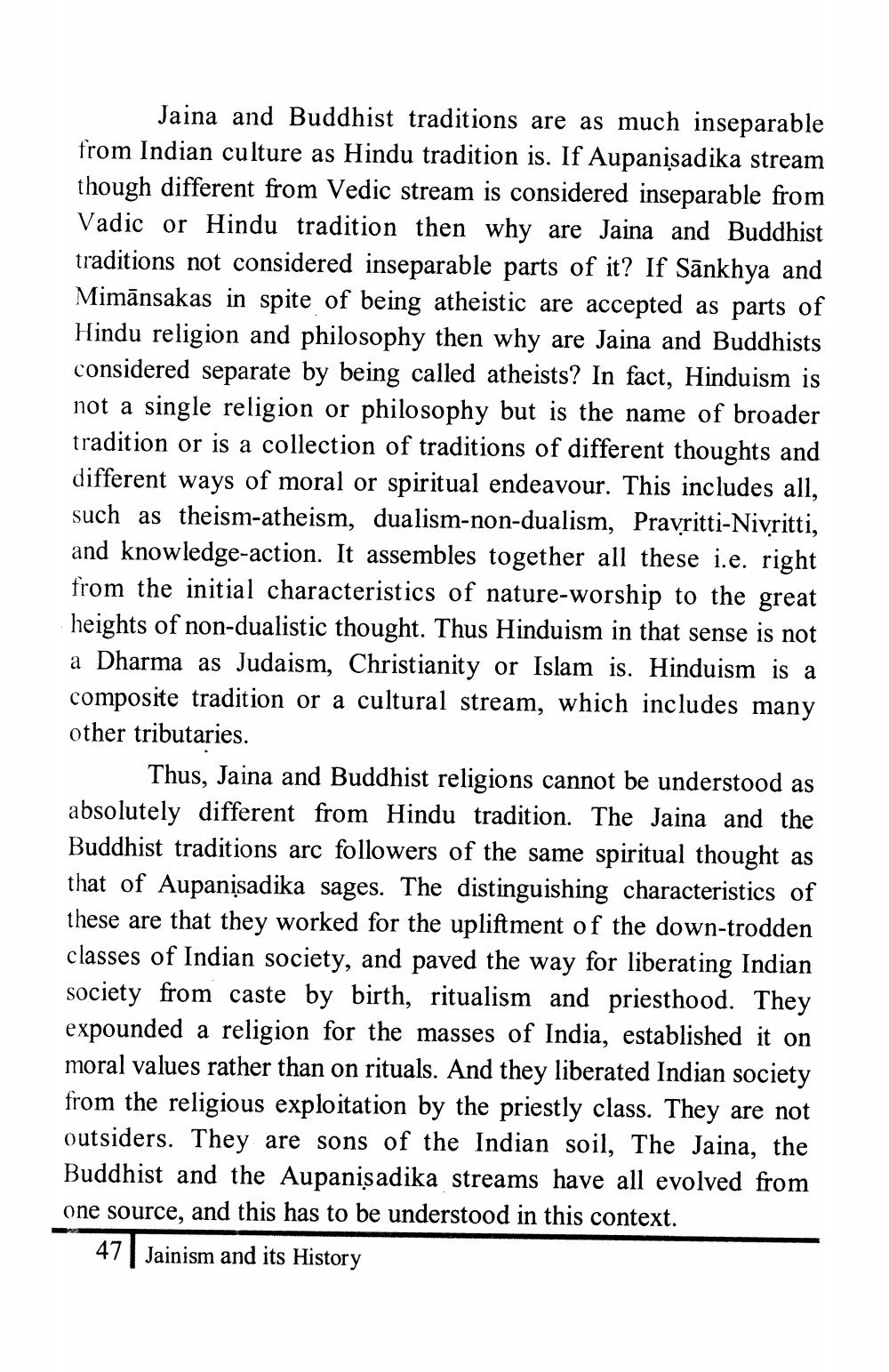________________
Jaina and Buddhist traditions are as much inseparable from Indian culture as Hindu tradition is. If Aupanısadika stream though different from Vedic stream is considered inseparable from Vadic or Hindu tradition then why are Jaina and Buddhist traditions not considered inseparable parts of it? If Sānkhya and Mimānsakas in spite of being atheistic are accepted as parts of Hindu religion and philosophy then why are Jaina and Buddhists considered separate by being called atheists? In fact, Hinduism is not a single religion or philosophy but is the name of broader tradition or is a collection of traditions of different thoughts and different ways of moral or spiritual endeavour. This includes all, such as theism-atheism, dualism-non-dualism, Pravritti-Nivritti, and knowledge-action. It assembles together all these i.e. right from the initial characteristics of nature-worship to the great heights of non-dualistic thought. Thus Hinduism in that sense is not a Dharma as Judaism, Christianity or Islam is. Hinduism is a composite tradition or a cultural stream, which includes many other tributaries.
Thus, Jaina and Buddhist religions cannot be understood as absolutely different from Hindu tradition. The Jaina and the Buddhist traditions arc followers of the same spiritual thought as that of Aupan sadika sages. The distinguishing characteristics of these are that they worked for the upliftment of the down-trodden classes of Indian society, and paved the way for liberating Indian society from caste by birth, ritualism and priesthood. They expounded a religion for the masses of India, established it on moral values rather than on rituals. And they liberated Indian society from the religious exploitation by the priestly class. They are not outsiders. They are sons of the Indian soil, The Jaina, the Buddhist and the Aupanişadika streams have all evolved from one source, and this has to be understood in this context.
47 Jainism and its History




